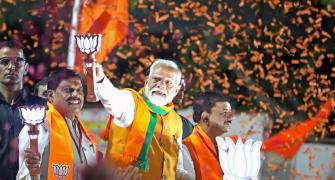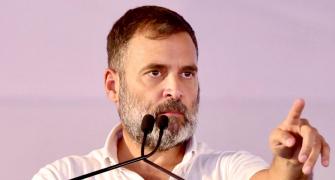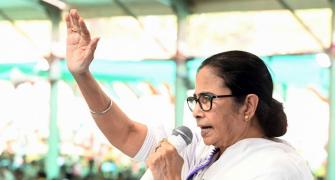The RBI figures on defaults by banks and co-operatives are close to Rs 30,000 crore (Rs 300 billion); maybe it's time for the Finance Ministry to be sued under the Right to Information Act?
Oil and energy facts are more important and more difficult to come by. It is claimed by all and sundry (government, oil companies, the market) that there is a net subsidy (under-recovery) of about Rs 225,000 crore (Rs 22.5 billion). And that the poor man's fuel, kerosene, was, until recently, being heavily subsidised.
Various facts about the market and domestic price of four energy items (kerosene, LPG, diesel and petrol) are presented for two different assumptions of international oil prices: at $80 and $130 a barrel. The concern here is not what the net tax on oil should be; rather, it is whether the GoI oil policy is transparent.
Five major oil facts are interesting, if not revealing. First, and most unusually, the price of diesel in India is considerably below (25% less) the price of petrol; the world prices diesel at 20 per cent above the price of petrol.
Second, the consumer price of petrol in India is more than that in the US (at $4.40 a gallon), and among the highest in the developing world. In China, petrol is priced at only 74 cents a litre, compared to the average Indian price of $1.17 a litre.
Third, with oil at $80/barrel, use of kerosene was being taxed by 5 per cent. Most people (including myself) believe that use of kerosene has been heavily subsidised.
Fourth, at $80/barrel oil, the total tax gain to the economy was around Rs 91,000 crore (Rs 910 billion); today, at $130/barrel oil, the total loss (subsidy) is only Rs 25,000 crore (Rs 250 billion) or only 0.5 per cent of GDP.
Fifth, and finally, there is little sign of the 5 per cent of GDP loss figure (Rs 225,000 crore), which is fashionably being touted around as the loss from our oil policy.
How is this patently false figure obtained? Via the oiliness of Indian policy, which is to first impose a tax on produced oil, and then sell it at a somewhat lower price, and then sell oil bonds to make up some of the difference!
At the end of it, no one knows whether there is actually a subsidy or a tax, and what its cost to the economy is. A numerical example can help illustrate. Assume international oil is at Rs 100; there is first a Rs 50 tax, then a Rs 25 subsidy. The government claims it is subsidising by Rs 25, when it is indeed taxing by the same amount! If this is not oily economics, I would like to meet the snake oil champion.
The figures presented are also disturbing. Why is there not much more scrutiny and discussion about the oily expenditures involved with other non-transparent government policies? Such expenditures are greater, and help the poor less.
But a greater problem might be that the government (RBI, Ministry of Finance, etc) may be making policy based on the certainty of $130/oil for the next year when there is not enough evidence to warrant this conclusion.
The guessing game: Is oil taxed, or subsidised|
Item |
Consumption |
International oil prices at |
Indian price 6-Jun-08 Rs/Litre |
Tax/Subsidy $80/barrel $130/barrel Rs '000 crore |
| Kerosene |
10 |
24 39 |
25 |
1000 -14000 |
| LPG |
11 |
17 27 |
25 |
8800 -2200 |
| Diesel |
48 |
26 42 |
36 |
48000 -28800 |
| Petrol |
10 |
22 35 |
55 |
33000 -20000 |
| Total |
|
|
90800 -25000 |
Source: Consumption data from Government of India documents
Note: The items come in different units (cylinders etc) and have been converted using standard industry conversions
One widely prevalent market view is that oil will be considerably higher than $130 because of the inexorable demand from primarily the large populations of China and India. It is argued that a BIG reason for the price of oil to go up 600 per cent these last 10 years (the average price of oil in the late 1990s was $20 a barrel) is because of India-China.
But these countries have been growing at a fast pace for the last 30 years, not just the last 10 years or just the last three months. So perhaps there is a bubble in the price of oil at $130, given that all the markets, and the pundits, were pricing it at $85 in February 2008, notwithstanding the hoopla of India and China.
It may be appropriate for investment banks and hedge funds to follow such risky strategies of everlasting increases in the price of oil; but the government of India?
An oil forecast based on India-China fundamentals is highly analogous to the recent speculative forecasts for the dollar/rupee made by these very same investment banks. It was argued, until just a month ago, that because India and China were both growing fast, their exchange rates would rise inexorably in the fashion envisioned by Led Zeppelin, Stairway to Heaven.
The rupee was forecast to be at 38 by end-2007, and then 36 and 33 soon thereafter. These talking-your-book investment banks did not bother to check that while China had a current account surplus of 11 per cent of GDP, India had a deficit of 3 per cent and a deficit which would become considerably greater if the rupee had gone to 38 or 33.
Today, the rupee is at 43, a good 12 per cent away from its highly "reliable inevitable" forecast. Given the volatility of the rupee, and oil, this ex-post error of the extrapolated forecast is just as huge as forecasting oil at 50 per cent away from its eventual value!
The point is simple; just because there is a fundamental at play, it does not mean that any forecast is reliable. Not all stairways go to heaven, not all forecasts come true.
Indeed, given the extraordinary spike of oil, a 50 per cent rise in the past three months, a prudent government, or investment bank, would play a waiting game for the market to "stabilise" - just as the prudent investor would/should have done when the US dollar was on its lows at Rs 39.
The author is Chairman, Oxus Investments, a New Delhi based asset management company. The views expressed are personal.








